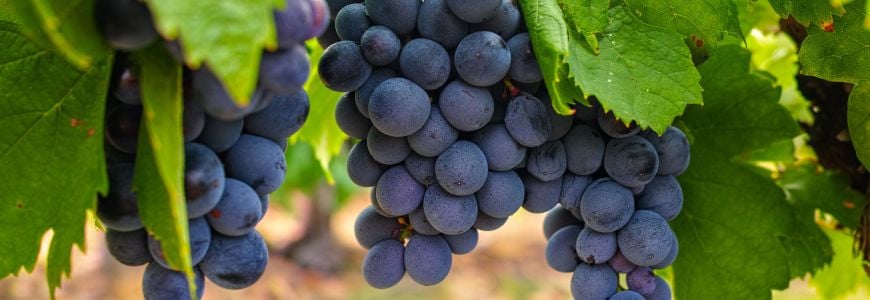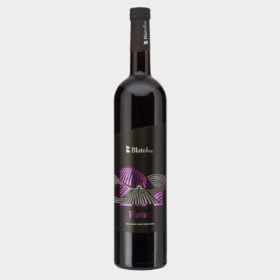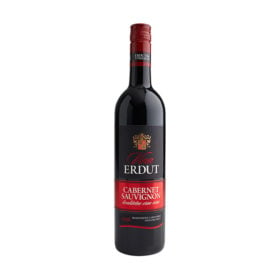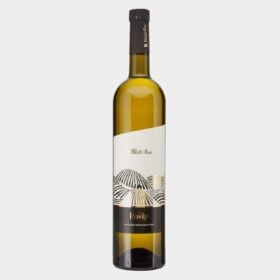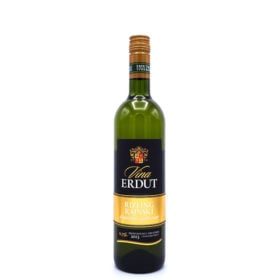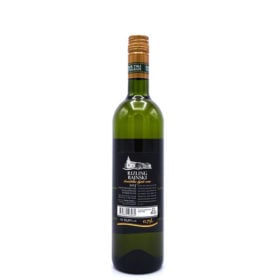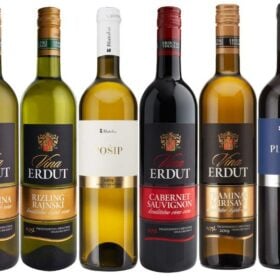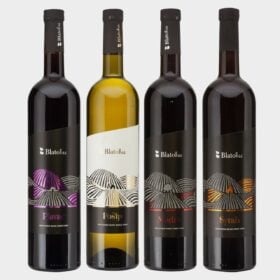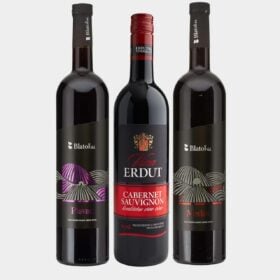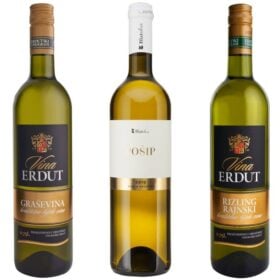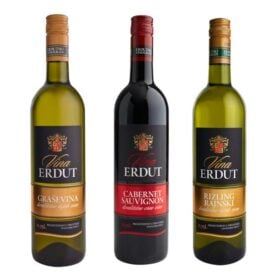The most popular Croatiansxhe red wines are Plavac Mali, Dingac, Babić, Teran, post-up, lasina, Frankovka, Plavina and Dobričić. But which of these red wines from Croatia you already know, and what is your favorite Croatian Red wine?
Content
Dobricic
Dobričić is a native Croatian grape that comes from Dalmatia. It is believed to have originated in the Croatian island of Šolta, where it is still mainly cultivated, along with the neighboring wine regions of Čiovo and Trogir-Kaštela. Dobričić is probably best known as the parent of the famous Croatian grape Plavac Mali.
The other parent is Crljenak Kaštelanski, better known as Primitive en Zinfandel. Cépage / Cuvée wines from Dobričić are dark, concentrated and rich in tannins, filled with fruity aromas reminiscent of red fruits and plums. In general, as the wine ages, the quality will also improve because the tannins more toned down and the wine develops a juicier, jam-like aroma.
Dobričić is typically low in acidity and often has a subtly sharp note. These wines pair well with equally strong dishes and pair well with red meats, stews and braised meats.
Crljenak Kastelanskic
Crljenak Kaštelanski or Tribidrag, the latter being the oldest recorded name for the variety, was a relatively obscure and almost forgotten Croatian grape until it was revealed that Crljenak Kaštelanski was closely related to Plavac Mali – Croatian most famous Red wine grape – and that it enjoys immense international popularity among its better-known synonyms, Primitive in Italy and as Zinfandel in the United States.
Crljenak Kaštelanski comes out Dalmatia, where it was once a common grape, but has nearly disappeared from the region after phylloxera (aphid species). The grape was probably transported to Italy in the 18th century and then brought to the United States, where it was introduced as Zinfandel.
The discovery of its origin was made in 2001. Before that it was mainly believed that Zinfandel a signature American grape + native to the region. Despite the same genetics, the grape creates different flavor profiles. The Croatian Crljenak Kaštelanski is a full-bodied wine, usually with an intense dark red color.
It contains a lot of alcohol and tannins, with a balanced acidity and notes reminiscent of red and dark berries such as blackberries and blueberries, along with some licorice and spices. These wines go well with red meat, game, but also with tuna.
Plavina
Plavina is a native Croatian grape that comes from the north of Dalmatia. The grape was mainly used in blends / vintage wines, usually with more robust Croatian grapes such as Babić en Plavac Mali, but some producers have proven that this humble local variety has good potential as an accessible wine.
Plavina is a high yielding grape that usually produces wines with a lighter character. The wines are easy to drink and pleasant, typically low in tannins and acidity, with a medium body and refreshing fruity character. Due to their light character, they can be enjoyed young.
Plavina wines can be paired with local specialties including meat dishes or lighter dishes such as pasta, risottos or even seafood. Plavina is a descendant of the legendary Croatian grape Tribidrag (Crljenak Kaštelanski). Aside from grape varieties and red blends, Plavina is one of the most common grape varieties used in a Prošek traditional Dalmatian dessert wine.
lasina
Lasina is a wine from the Croatian region Dalmatia. This rare red grape, often Dalmatian Pinot Noir called, is used in blends, usually with Babić and Plavina. There are only a few Croatian producers who produce Lasina varieties.
These varieties are medium-bodied, elegant and aromatic. They usually have a lighter character than other Dalmatian reds. Their tannins are low, while the acidity is high. These wines are dominated by the aroma of red fruits, often accompanied by earthy, herbaceous or mineral nuances.
Lasina is an ideal combination with charcuterie, but can also go well with fish, especially fatty fish or creamy fish dishes. It can also go well with lamb, veal, risotto and pasta dishes. Lasina has been underrated for many years and its excellent potential has only recently been promoted by several producers from NorthernDalmatia, mainly located around Šibenik.
Approach
Postup is a Croatian wine-growing area designated for the production of ruby red wines from Plavac Mali, one of the signature Dalmatian varieties. Located on the southern slopes of the Pelješac peninsula, the region has long been unduly eclipsed by the neighboring Dingač appellation.
Postup is the second oldest protected wine region in Croatia (1967), after Dingač, and today enjoys a reputation as one of the best expressions of Plavac mali and one of the best Croatian wines. Postup wines are full-bodied and balanced, with fruity aromas reminiscent of berries, dry plums and dry figs.
They go well with roasted or braised red meat, game, fried fish and hearty fish stews.
Teran
Teran is a red grape variety that has been cultivated for centuries in Istria (Croatia), Friuli (Italy) and the Kras Plateau in Slovenia. The history and usage of the name Teran has long been disputed between Croatia and Slovenia, and although Slovenia registered the name as a Protected Designation of Origin, their Teran-wines mainly produced from a distinct variety called Refošk.
The dispute was partially settled by the European Union when Croatia was allowed to use the name, but the wine must be labeled as Teran – Croatian Istria (Hrvatska Istra). Slovenia later filed a lawsuit against the European Commission and this decision, but in 2020 the General Court of the EU upheld the earlier ruling and rejected Slovenian claims.
To add to the confusion, Refošk and Terangrapes have long been mistakenly regarded as the same variety, but recent findings show they belong only to the same family (Refosco). Varietal Istrian Teran is typically fresh and fruity with a balanced acidity, firm tannins and typical notes of berries and spices.
It is usually drunk young and goes well with charcuterie, cheese and game.
Babić
Babić is a native red Croatian grape mainly grown in central and northernDalmatia and on some Dalmatian islands, but the best expressions come from Šibenik-Knin province. The variety was traditionally used as a blending grape, but has shown excellent potential as an age-worthy varietal wine.
The terroir has a dramatic influence on the quality of Babić-wines. Fertile soils around Šibenik tend to produce light, medium-bodied wines with taste and aroma reminiscent of red currants. The best expressions of Babić come from Primošten and Rogoznica, located in the southernmost part of Šibenik-Knin county, where the grapes are mostly grown on poor, karst-limestone soils surrounded by stone walls.
The wines from this region are full-bodied and powerful, with good acidity and some mineral backbone. The aroma is reminiscent of dark fruits and sour cherries, sometimes accompanied by herbaceous or spicy notes. These rich and balanced wines go well with game or other dark meats, stews, stewed or grilled dishes and cheese.
Dingach
Dingač is a Croatian wine-growing region on the Pelješac peninsula. The region is a protected and the most famous place for Plavac mali – the native Croatian grape that is highly prized red wines produces. Due to its small size, the area is often referred to as a microregion.
It is located on the steep southern slopes of the peninsula, between the villages of Trstenik and Podobuče. The combination of specific climate and terrain allows for low yields, but the result is an incredibly concentrated wine and what is considered the ultimate expression of Plavac mali.
Dingač wines have a perfect balance between alcohol and acidity. They are rich in soft tannins and intense in taste, while the aromas are reminiscent of ripe, stewed berries and dry fruit. The uneven ripening of the grape often affects the alcohol content in these wines, which can sometimes reach the highest possible limits.
Dingač goes well with savory and spicy dishes. It goes well with roasted or stewed red meat, lamb or game.
Plavac Mali
-
Original price was: 19,98. 13,99Current price is: 13,99. Add to Cart
Plavac Mali is a red grape variety native to the southern Croatian region Dalmatia. A brother or sister of Primitive en Zinfandel, and a descendant of the Crljenak kaštelanski and Dobričić varieties, the grape makes bold, powerful wines overflowing with ripe fruit and rich in tannins.
Plavac mali is usually made as a varietal wine, and it is popular as a flagship Croatian Red wine. The best expressions are thought to come from the Pelješac peninsula, from the Dingač and Postup appellations. Traditionally it is combined with fatty and grilled fish, but it also goes well with red meat, aged cheese, game or hearty stews.
Frankovka
Frankovka is one of those wine varieties that many countries and regions claim to be native to them, but unfortunately we don't really know where it originally came from – most claim it was Austria, but that was never unequivocally confirmed. It exists in most of Central Europe: Austria and Germany (where it Blaufränkisch is called), Czech Republic (particularly South Moravia where it is known as Frankovka), Slovakia (where it is known as Frankovka modrá), Slovenia (known as Modra Frankinja ), Italy (Franken) and Hungary (there it is called Kékfrankos, which of course also means blue Frankish).
The name is said to come from the name Francia, a kingdom that owned a large part of Europe's territory in the Middle Ages. It is a red grape, fairly resistant to cold in winter, but still needs a lot of sun in summer, so it is ideal for the Central European region. In Croatia, it is traditionally grown in Slavonia, on Plešivica, in Moslavina and in Istria (where it has a very local name “Borgonja”, which is not used anywhere else).
Many Croatian winemakers make Frankovka, both as a varietal wine and in blends, so it is easy to find it in stores, or to taste if you are in Slavonija (specifically Orahovica, Feričanci, Đakovo, Kutjevo), Moslavina or Plešivica , where most of it is made. A part of Frankovka wine will be top quality, and the price you pay for it will probably be lower than you expect, so you can go nuts and buy a few more bottles just for comparison.
You should be any serious Frankovka drink slightly chilled, about 16-18°C, and enjoy with dark meats, preferably grilled meats, game dishes, cured meats and stronger cheeses.
Cabernet Sauvignon
Cabernet Sauvignon is probably the best-known red wine grape variety on earth. It is only matched in this respect by its Bordeaux competitor Merlot. But also its counterpart in Burgundy, Pinot Noir. Since its origins in Bordeaux, Cabernet Sauvignon has successfully spread to almost every wine country in the world.
Cabernet Sauvignon is one of the most famous grapes in the world. He is therefore rightly called King Cab. Cabernet Sauvignon is best known in Bordeaux where he, together with Merlot and Cabernet Franc wines of high class. Cabernet Sauvignon needs a lot of sun to ripen. Otherwise it will remain green and somewhat bitter with a green pepper flavor profile. Lots of sun makes the Cabernet Sauvignon soft and jam-like, with a taste of blackcurrant.
Merlot
De Merlot is originally a French grape variety that is very popular in Croatia. It has been planted in various regions of Croatia over the decades. Both in the continental part of Croatia and in the coastal areas. In Istria has the Merlot even the local grape variety, the Teran, overtaken in popularity. In addition, the Merlot well represented in the extreme south of Croatia, especially in the Dubrovnik area.
The grapes lend themselves well to viticulture. It has a high yield and is not 'picky' about the soil. The grape variety grows best on slopes. This grape grows best exposed to the sun and without long humid periods. Even if this ideal environment is missing, the Merlot are not less ripe and do not give a milder quality. Even then the grape is able to give an ideal yield. Precisely because of these “adaptable” qualities, the Merlot successfully spread throughout Croatia.
It is an ideal wine for novices Red wine drinker and combines well with many dishes such as casseroles, chicken, veal, game or pasta.
Pinot Noir – Pinot Crni
It is grown in all continental regions and in Istria. In each of the regions comes a different character. The most aromatically attractive comes from central and northwestern Croatia, especially from the Plešivica sub-region. In these parts Pinot Noir almost black in color and contains the primary aromas of a fruity character such as strawberries and raspberries. The taste is dominated by the refreshing character of the accentuated wine acids. At the quality wine variant, the pinnacle of quality is only reached after several years of maturation, partly in barrels, partly in bottles, because despite the consistent appearance of secondary and tertiary aromas, it retains excellent freshness and fruitiness.
In the eastern part of continental Croatia, in Slavonia, and especially in Kutjevo, it becomes softer and fuller, somewhat darker in color. Here the conditions are very similar to the native Burgundy, so the character of the wine has adapted to this. It still has a nice freshness, but the fullness and height of the alcohol are a bit more pronounced. The aromas change accordingly, which are also fruity, but with an abundant presence of more spicy notes.
In the extreme east of continental Croatia, in the Danube region, Pinot Noir thorough. The color darkens completely and the aromatic profile is more like Californian expression than Bordeaux wine. The aromas have changed from fruity to jammy and the taste is extremely full and luscious, with a long retro taste that leaves a slightly sweet impression in the mouth long after drinking.
Pinot Noir has adapted well to the continental region of central Croatia, where it gives better results than other international red varieties.
En white wines than?
Croatia is home to some of the most popular white wines made in the world. Some of the best known are Graševina, Posip, Pinot Grigio, Riesling en Chardonnay† Each wine has its own unique taste and characteristics that set it apart from the rest.
Grasevina is a light one White wine with a delicate taste. It is usually straw yellow in color and has a slightly fruity taste. Pinot Grigio is also light in taste, but has a more intense taste than Graševina† It is usually pale in color and has a fruity, floral aroma. Chardonnay is a full White wine with a rich, buttery taste. It is typically yellow in color and has a strong aftertaste that lingers in the mouth.
Whether you like light or full white wines, Croatia has something to offer. If you're looking for an elegant wine to pair with your meal, try one of these popular Croatian wines white wines. You won't be disappointed!

